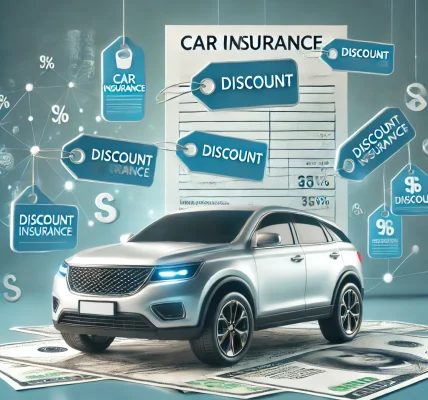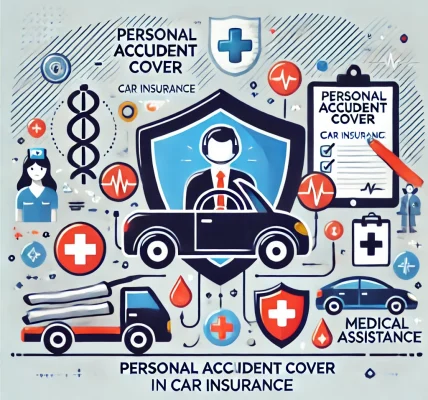Car insurance is an essential financial safeguard that protects you from unexpected expenses related to accidents, theft, and damage to your vehicle. However, with countless providers and policy options available, choosing the right car insurance policy can be overwhelming. The key is to find a balance between comprehensive coverage and affordability while ensuring you meet legal requirements.
This guide will walk you through the essential factors to consider when selecting the best car insurance policy for your needs.
1. Understand the Different Types of Car Insurance Coverage
Before purchasing a policy, it is crucial to understand the different types of coverage available. Each type serves a specific purpose and offers different levels of protection.
Types of Car Insurance Coverage:
- Liability Coverage (Required in most states): Covers damages and injuries you cause to others.
- Collision Coverage: Pays for damages to your car resulting from an accident, regardless of fault.
- Comprehensive Coverage: Covers damages from non-collision incidents like theft, vandalism, fire, and natural disasters.
- Personal Injury Protection (PIP) / Medical Payments (MedPay): Covers medical expenses for you and your passengers.
- Uninsured/Underinsured Motorist Coverage: Protects you if you’re in an accident caused by a driver with insufficient or no insurance.
- Gap Insurance: Covers the difference between your car’s actual cash value and what you owe on a loan or lease.
2. Assess Your Personal Insurance Needs
Every driver’s situation is unique, so the best policy for someone else may not be the best for you. Consider the following factors to determine the right level of coverage:
Factors to Consider:
- Vehicle Value: Newer and expensive cars may need comprehensive and collision coverage.
- Driving Habits: If you commute long distances, you may need higher coverage.
- Location: Areas with high accident rates or theft may require additional protection.
- Financial Situation: Can you afford higher deductibles to lower premiums?
- Legal Requirements: Ensure compliance with state-mandated minimum coverage.
3. Compare Insurance Providers
Not all insurance companies offer the same rates, customer service, or benefits. Research multiple providers to find the best combination of price, reliability, and coverage.
How to Compare Providers:
- Check Ratings and Reviews: Look for customer feedback and ratings from sources like J.D. Power and Better Business Bureau.
- Compare Quotes: Get at least three quotes to find the most competitive pricing.
- Review Claim Process: Choose an insurer known for a smooth and quick claims process.
- Financial Stability: Ensure the company is financially stable by checking ratings from A.M. Best or Moody’s.
4. Look for Discounts and Savings Opportunities
Many insurers offer discounts that can significantly reduce your premiums. Be sure to ask about available savings opportunities.
Common Discounts Include:
- Safe Driver Discount – For maintaining a clean driving record.
- Multi-Policy Discount – Bundling auto with home or renters insurance.
- Good Student Discount – For students with a high GPA.
- Low Mileage Discount – For drivers who don’t travel frequently.
- Anti-Theft Device Discount – If your car has security features.
- Paperless Billing Discount – For opting for electronic statements.
5. Understand Policy Terms and Conditions
Before finalizing your policy, thoroughly read and understand the terms to avoid unexpected surprises later.
Key Aspects to Review:
- Deductibles: The amount you pay before insurance covers the rest.
- Coverage Limits: Maximum amount the insurer will pay for claims.
- Exclusions: Situations or damages not covered by the policy.
- Claim Filing Process: How to report an accident and get compensated.
6. Choose the Right Deductible
The deductible is the amount you agree to pay out of pocket before insurance kicks in. Choosing the right deductible can significantly impact your premium.
Deductible Considerations:
- Higher Deductible = Lower Premiums: If you can afford a higher upfront cost, you’ll pay lower monthly premiums.
- Lower Deductible = Higher Premiums: A lower deductible means less upfront cost but higher monthly payments.
- Find a Balance: Choose a deductible you can comfortably afford in case of an accident.
7. Check for Additional Coverage Options
Some insurers offer add-on coverage that can enhance your policy’s protection.
Useful Add-On Coverages:
- Roadside Assistance: Covers towing, flat tires, and lockouts.
- Rental Car Reimbursement: Pays for a rental car while your vehicle is being repaired.
- New Car Replacement: Provides a new car instead of depreciated value if yours is totaled.
- Custom Parts Coverage: Protects aftermarket modifications or upgrades.
8. Consider Usage-Based or Pay-Per-Mile Insurance
If you drive infrequently, a usage-based insurance program might be a cost-effective option.
How It Works:
- Telematics Tracking: Your insurer tracks your driving habits via a device or mobile app.
- Lower Rates for Safe Driving: Drivers who exhibit safe behaviors, such as low mileage and smooth braking, can receive discounts.
- Best for Low-Mileage Drivers: If you drive less than 10,000 miles per year, this option could save you money.
9. Regularly Review and Update Your Policy
Car insurance needs change over time, so it’s essential to review your policy annually.
When to Reassess Your Coverage:
- Life Changes: Marriage, moving, or adding a teen driver.
- Vehicle Changes: Buying a new car or selling an old one.
- Changes in Driving Habits: If you start working from home or driving less.
- Policy Renewals: Check for rate increases and negotiate a better deal if needed.
10. Avoid Common Car Insurance Mistakes
Many drivers make mistakes when purchasing insurance that can lead to higher costs or inadequate coverage.
Mistakes to Avoid:
- Only Choosing the Cheapest Policy: Low-cost policies may not provide sufficient coverage.
- Not Understanding Policy Exclusions: Know what is and isn’t covered.
- Failing to Shop Around: Sticking with one insurer may not always be cost-effective.
- Ignoring Available Discounts: Not asking about discounts could mean missing out on savings.
- Providing Inaccurate Information: Incorrect details can lead to claim denials or policy cancellations.
Conclusion
Choosing the best car insurance policy requires careful consideration of your needs, budget, and available options. By understanding different coverage types, comparing providers, exploring discounts, and reviewing policy details, you can make an informed decision that offers both protection and affordability.
Taking the time to research and evaluate your choices can lead to long-term savings and peace of mind. Stay proactive, reassess your policy regularly, and ensure that your coverage adapts to your evolving needs.




